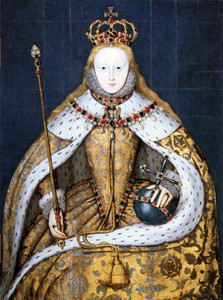 This post has kindly been written for us by Abigail Lane, who interned for IHR Digital in July 2015.
This post has kindly been written for us by Abigail Lane, who interned for IHR Digital in July 2015.
Connected Histories series is an online search directory consisting of a wide variety documents from 1500-1900 and containing nine research guides. The variety of topics that this resource covers, and the depth that these documents go into, is incredibly useful for anyone looking for information about a particular topic.
For example the words “Queen Elizabeth I” will bring up 2,007,131 different results. Connected Histories also allows the user to find relevant documents by narrowing the search criteria. This can be done by selecting a specific date, document type and specifying the availability of a document. I had a look through some of the various results that it gave me for Queen Elizabeth I, and soon I had found Calendar of State Papers detailing references to her suitors. In the Volume 7 of the Calendar of State Papers Foreign, Elizabeth, Eric XIV of Sweden assures the Queen of his intent to marry her. This provided an interesting insight into the interaction between Elizabeth I and her suitors, from the comfort of my own desk. The information gathered from this online resource was complemented by the extensive libraries of the Institute of Historical Research. The Bibliographical Dictionary of British Feminists, Elizabeth I collected Essays and Essays in Elizabethan History were books I found in the library which, combined with the information-rich Connected Histories series, helped create my own interpretation of the monarch. One source in particular helped with this, as it contained speeches made by the Queen during her reign. One such speech was the one she made on the morning of the Spanish Armada. On the morning of the attack Elizabeth offered strength and encouragement to her troops. As the men assembled at Tilbury on 9th August 9, 1588 she delivered perhaps her most famous speech, telling troops: “I know I have the body but of a weak and feeble woman, but I have the heart and stomach of a King.”
The resources of the IHR library and Connected Histories in particular are incredibly useful for anyone researching an individual or topic. It was especially interesting for me to use, as I have just finished my first year of University and so I do not have the defined, specific research interests of a third year student completing their dissertation, for example. Whilst this meant that I didn’t really know where to start my research, it also had the added benefit of having an extensive variety of documents at my fingertips, and that I was free to read anything I fancied. The journals of Queen Victoria were particularly interesting and I found myself reading accounts of her birth and how she felt towards her babies when they were born, to details of her coronation in her own words. The diverse nature of Connected Histories meant that after reading Queen Victoria’s journals I soon found myself reading about the origins of my hometown in Victoria County History before using the Proceedings of the Old Bailey Online to read about court cases from the 1600s. Connected Histories is a really useful resource for anyone looking for detailed information about an event or person and offers a rich array of different types of documents, from newspaper extracts to national government records.
